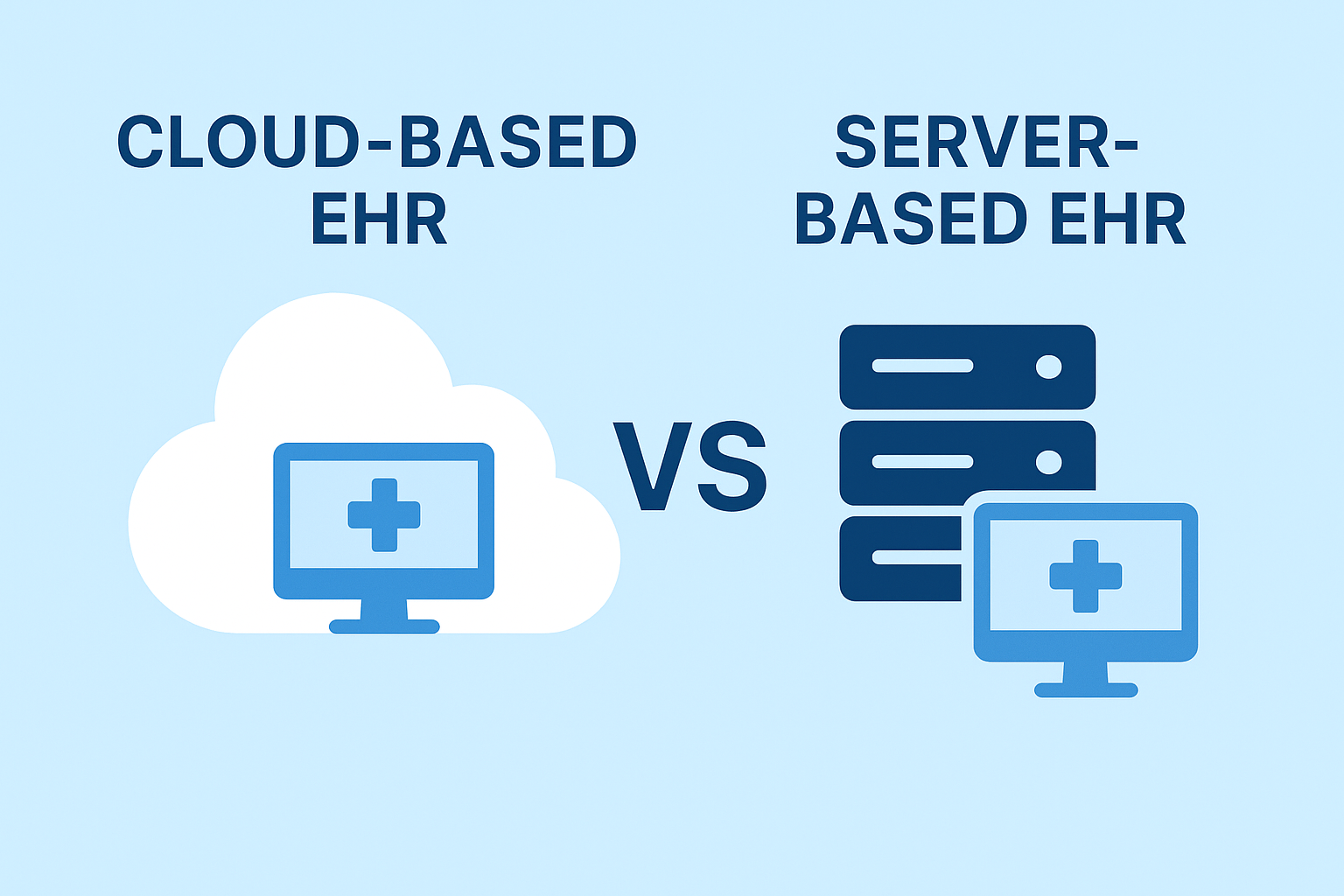The Ultimate Guide to Choosing a Modern EHR System
Discover the essential elements to consider when selecting a modern EHR system that meets your practice's needs.
5 min read
AVS Medical : Nov 30, 2023 11:30:00 AM

Discover the key features to consider when selecting an electronic health record (EHR) system in order to maximize its benefits.
Electronic Health Record (EHR) systems have revolutionized the way healthcare providers manage patient information. These digital platforms offer numerous benefits, including improved patient care, streamlined workflows, and increased efficiency. By understanding the importance of EHR systems, healthcare organizations can effectively harness their power to transform the way they deliver healthcare.
EHR systems provide a comprehensive and centralized database of patient health information, including medical history, lab results, allergies, and medications. This allows healthcare providers to have instant access to accurate and up-to-date patient data, enabling them to make well-informed decisions about patient care. With EHR systems, healthcare professionals can easily track and monitor patient progress, identify potential health risks, and provide personalized treatment plans.
Moreover, EHR systems facilitate seamless communication and collaboration among healthcare providers. With secure messaging features, doctors, nurses, and other healthcare staff can easily share patient information, consult with each other, and coordinate care. This improves care coordination and reduces the risk of medical errors, ultimately leading to better patient outcomes.
In addition to improving patient care, EHR systems also offer financial benefits to healthcare organizations. By automating administrative tasks, such as billing and coding, EHR systems reduce the need for manual paperwork and minimize the risk of errors. This not only increases efficiency but also improves revenue cycle management. With accurate and timely billing, healthcare organizations can optimize reimbursement and ensure financial stability.
Overall, EHR systems play a crucial role in modern healthcare. They improve patient care, enhance workflows, and provide financial benefits. Understanding the importance of EHR systems is the first step in harnessing their full potential and maximizing their benefits.
Choosing the right Electronic Health Record (EHR) system is a critical decision for healthcare organizations. To ensure that you maximize the benefits of your EHR system, it is important to consider the following key features:
1. User-Friendly Interface: A user-friendly interface is essential for seamless navigation and efficient use of the EHR system. Look for systems that have intuitive layouts, clear labeling, and easy-to-use features.
2. Interoperability: Interoperability refers to the ability of the EHR system to exchange data securely with other healthcare systems and providers. It is important to choose an EHR system that can integrate with other systems, such as telehealth, lab systems, imaging systems, patient portals and pharmacies, to ensure seamless data exchange.
3. Customization Options: Every healthcare organization has unique workflows and requirements. Look for EHR systems that offer customization options, allowing you to tailor the system to your specific needs. This can improve workflow efficiency and user satisfaction.
4. Data Security: Protecting sensitive patient information is of utmost importance. Ensure that the EHR system you choose has robust security measures in place, such as encrypted data transmission, user authentication, and access controls. Regular security audits and updates are also crucial to maintain data integrity and confidentiality.
5. Training and Support: Implementing a new EHR system requires training and support for smooth adoption. Look for vendors that offer comprehensive training programs, user manuals, and ongoing technical support. This will ensure that your staff is well-equipped to use the system effectively.
By considering these key features when choosing an EHR system, healthcare organizations can optimize their use of the system and maximize the benefits it offers.
Interested in a New EHR System? Try NextGen Office!
One of the key features to look for in an Electronic Health Record (EHR) system is its integration capabilities. Integration refers to the system's ability to securely exchange data with other healthcare systems, such as telehealth, lab systems, imaging systems, patient portals and pharmacies.
Seamless data exchange is crucial for efficient and coordinated patient care. When selecting an EHR system, ensure that it can integrate with the existing systems used by your healthcare organization. This will enable the sharing of patient information, test results, medications, and other vital data across different systems, eliminating the need for manual data entry and reducing the risk of errors.
Integration capabilities also extend to external systems, such as health information exchanges (HIEs) and other healthcare providers. An EHR system with strong integration capabilities allows for secure and efficient communication and collaboration with external partners, improving care coordination and patient outcomes.
Furthermore, integration capabilities enable the EHR system to receive and incorporate data from wearable devices and remote monitoring tools. This facilitates the collection of real-time patient data, allowing healthcare providers to monitor patients remotely and intervene when necessary. This integration of data from various sources enhances the accuracy and completeness of patient records, resulting in better-informed clinical decisions.
In summary, integration capabilities are a vital feature of an EHR system. By selecting a system with strong integration capabilities, healthcare organizations can achieve seamless data exchange, improve care coordination, and enhance patient outcomes.
Customization options are an important aspect to consider when choosing an Electronic Health Record (EHR) system. Every healthcare organization has unique workflows and requirements, and a one-size-fits-all approach may not be suitable for all. By opting for an EHR system that offers customization options, healthcare organizations can tailor the system to their specific needs, leading to improved workflow efficiency.
Customization options can include the ability to create templates and forms that align with the organization's documentation needs. This allows healthcare providers to capture and record information in a way that is familiar and efficient for them. Additionally, customizable workflows and order sets can be implemented to match the organization's established processes, further streamlining operations.
Another aspect of customization is the ability to configure alerts and notifications based on the organization's preferences and protocols. By setting up personalized alerts, healthcare providers can receive timely reminders and warnings, enhancing patient safety and reducing the risk of medication errors.
Furthermore, customizable data views and reports allow healthcare organizations to display and analyze data in a way that suits their needs. This can facilitate data-driven decision-making and quality improvement initiatives.
In conclusion, customization options in an EHR system enable healthcare organizations to optimize workflows and improve efficiency. By tailoring the system to their specific needs, organizations can enhance user satisfaction and achieve better outcomes.
When selecting an Electronic Health Record (EHR) system, one of the most critical considerations is data security. Protecting sensitive patient information is of utmost importance to ensure patient privacy and maintain data integrity.
Look for EHR systems that have robust security measures in place. This includes features such as encrypted data transmission, user authentication, and access controls. Encryption ensures that data is securely transmitted and stored, minimizing the risk of unauthorized access or data breaches.
Additionally, regular security audits and updates are essential to address any vulnerabilities and stay up-to-date with the latest security standards. EHR systems should undergo periodic evaluations to identify and address any potential security risks.
User access controls are another important aspect of data security. The EHR system should allow for role-based access, ensuring that only authorized personnel can access sensitive patient information. This helps prevent unauthorized disclosure or misuse of patient data.
Furthermore, staff training and awareness programs play a crucial role in maintaining data security. Healthcare organizations should provide comprehensive training to employees on data protection best practices, such as password management, phishing awareness, and secure data handling.
By selecting an EHR system that prioritizes data security and implementing proper security measures, healthcare organizations can safeguard sensitive patient information and maintain patient trust.
Implementing a new Electronic Health Record (EHR) system can be a complex process that requires careful planning and execution. To ensure a successful implementation, it is important to consider the training and support resources provided by the EHR system vendor.
Look for vendors that offer comprehensive training programs for both initial system implementation and ongoing support. Training should cover all aspects of the EHR system, including navigation, data entry, and system customization. This will ensure that your staff is well-equipped to use the system effectively and maximize its benefits.
In addition to training, access to user manuals and documentation is essential. User manuals provide detailed instructions on system functionalities and can serve as a valuable resource for troubleshooting and self-learning. Make sure that the EHR system vendor provides easily accessible and up-to-date user manuals.
Furthermore, ongoing technical support is crucial for addressing any issues or questions that may arise during system use. The EHR system vendor should offer responsive and reliable technical support, including a dedicated support team and a help desk for prompt assistance.
Collaborative user communities and online forums can also be valuable resources for troubleshooting, sharing best practices, and learning from other EHR system users. Look for EHR systems that have active user communities to facilitate knowledge exchange and support.
By considering the training and support resources offered by the EHR system vendor, healthcare organizations can ensure a smooth implementation process and maximize the benefits of the system.

Discover the essential elements to consider when selecting a modern EHR system that meets your practice's needs.

Choosing the right EHR has always been a major decision for medical practices, but in 2025 the stakes feel even higher. With ongoing reimbursement...

Undoubtedly, you are familiar with the Office of the National Coordinator for Health Information Technology (ONC-Health IT) 2015 Edition Cures Update...